Table of Contents
### The Great Pyramid of Giza
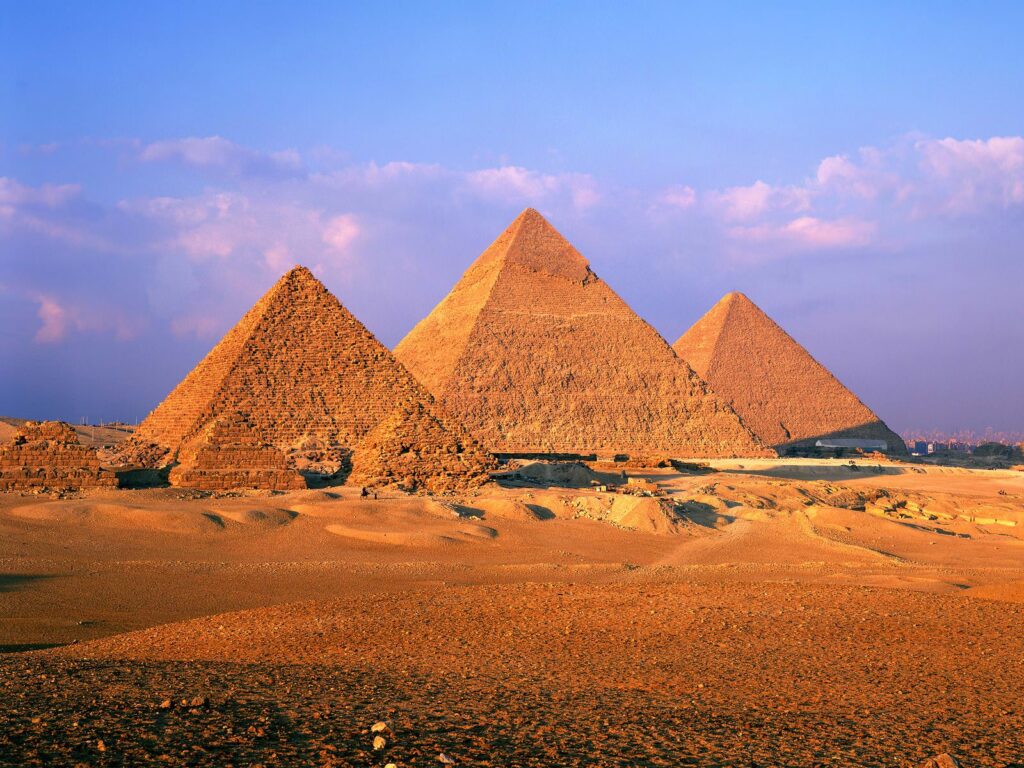
Pyramid of Giza
The Great Pyramid of Giza, the oldest and the only surviving structure of the Seven Wonders of the Ancient World, was constructed around 2580–2560 BCE. Located in Giza, Egypt, it was built as a tomb for the Pharaoh Khufu (Cheops). This monumental structure was originally 146.6 meters (481 feet) tall, but erosion and the removal of its outer casing stones have reduced it to 138.5 meters (454.4 feet). It was the tallest man-made structure in the world for over 3,800 years.
The pyramid’s construction remains a subject of fascination and debate. Made up of approximately 2.3 million stone blocks, each weighing an average of 2.5 to 15 tons, it is a marvel of engineering. The precision with which these blocks were placed continues to amaze modern engineers, especially considering the limited technology of the time. Some theories suggest that the pyramid was built using a straight or spiral ramp to move the massive stones into place, while others propose that a system of counterweights was employed.
Inside the pyramid, the King’s Chamber, Queen’s Chamber, and the Grand Gallery are some of the most significant features. The King’s Chamber, where Khufu’s sarcophagus resides, is made of large granite blocks that were transported from Aswan, located more than 800 kilometers (500 miles) away. The pyramid was originally encased in highly polished Tura limestone, which would have reflected sunlight and made the structure shine brilliantly.
The Great Pyramid of Giza has long been the subject of myth and legend, often associated with mystical and extraterrestrial theories. However, it remains a testament to the ingenuity and determination of the ancient Egyptians, symbolizing their belief in the afterlife and the importance of preserving the Pharaoh’s journey to eternity.

Hanging Gardens of Babylon
### The Hanging Gardens of Babylon
The Hanging Gardens of Babylon, one of the most mysterious wonders of the ancient world, were said to have been located in the city-state of Babylon, near present-day Baghdad, Iraq. Described as an extraordinary series of tiered gardens containing a wide variety of trees, shrubs, and vines, the gardens were built by King Nebuchadnezzar II around 600 BCE for his wife Amytis, who longed for the green hills and valleys of her homeland, Media (in present-day Iran).
Despite the detailed descriptions by ancient writers like Strabo and Philo of Byzantium, no definitive archaeological evidence of the Hanging Gardens has been found. This has led some historians to question whether they existed at all or if they were a poetic creation. The most widely accepted theory suggests that the gardens were constructed near the Euphrates River, using an advanced system of irrigation to pump water from the river up to the terraces, allowing the plants to thrive in the arid environment.
The gardens were described as a green oasis in the middle of the desert, with terraces rising like a theater. These terraces were said to be supported by stone columns and vaulted roofs, allowing trees and plants to be grown on top. The ingenuity required to sustain such lush greenery in a dry region is a testament to the engineering skills of the Babylonians. It is believed that the gardens were irrigated using a chain pump or a screw pump, both advanced technologies for their time.
The legacy of the Hanging Gardens of Babylon lies not only in their beauty but also in the mystery surrounding their existence. Whether they were real or a legend, they have captured the imagination of people for millennia, symbolizing the splendor and luxury of ancient Babylonian civilization.
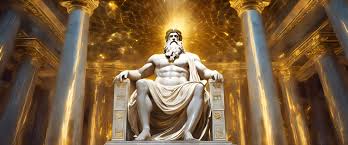
The Statue of Zeus at Olympia
### The Statue of Zeus at Olympia
The Statue of Zeus at Olympia was a colossal sculpture created by the famed Greek sculptor Phidias around 435 BCE. Standing at approximately 12 meters (39 feet) tall, the statue was housed in the Temple of Zeus at Olympia, Greece. The statue depicted Zeus, the king of the Greek gods, seated on a grand throne, holding a figure of Nike, the goddess of victory, in his right hand, and a scepter topped with an eagle in his left. The statue was made of ivory and gold-plated bronze, reflecting the grandeur and authority of Zeus.
Phidias’ masterpiece was an artistic and religious symbol of the ancient Greek world. The statue was so large that its head nearly touched the roof of the temple, giving the impression that if Zeus were to rise, he would lift the roof off the temple. The throne was elaborately decorated with precious stones, ebony, ivory, and gold, featuring images of mythical creatures and gods.
The creation of the statue was part of a broader cultural project that included the construction of the Temple of Zeus, which was one of the most important sanctuaries in ancient Greece. Olympia was not only a religious center but also the site of the Olympic Games, which were held every four years to honor Zeus. The statue’s presence at Olympia underscored the religious significance of the games and the cultural unity of the Greek city-states.
The fate of the Statue of Zeus remains a mystery. It is believed to have been moved to Constantinople (modern-day Istanbul) in the 4th century CE, where it was likely destroyed in a fire. Although the statue no longer exists, its memory has been preserved through ancient descriptions and replicas, serving as a reminder of the artistic and religious achievements of ancient Greece.
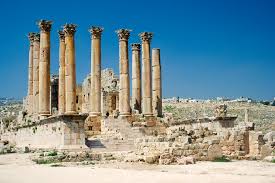
The Temple of Artemis at Ephesus
### The Temple of Artemis at Ephesus
The Temple of Artemis at Ephesus, also known as the Artemision, was an extraordinary ancient Greek temple located in the city of Ephesus (modern-day Selçuk, Turkey). Dedicated to the goddess Artemis, the temple was considered one of the largest and most magnificent structures of the ancient world. Built around 550 BCE, it was designed by the Cretan architect Chersiphron and his son Metagenes, with contributions from various other architects and sculptors.
The temple was built entirely of marble, measuring 115 meters (377 feet) long and 55 meters (180 feet) wide, with 127 columns, each standing 18 meters (60 feet) tall. These columns were intricately carved with scenes from Greek mythology. The temple housed a large statue of Artemis, which was made of gold, silver, and ebony. The goddess Artemis, associated with hunting, wilderness, and fertility, was one of the most revered deities in the Greek pantheon, and her temple attracted pilgrims from all over the ancient world.
The Temple of Artemis was not only a religious center but also a place of commerce and art. It became a hub for traders, artists, and worshippers, contributing to the prosperity of Ephesus. The temple’s grandeur and size were unmatched, earning it a place among the Seven Wonders of the Ancient World.
The temple faced multiple destructions and reconstructions over the centuries. It was first destroyed by a flood, then by arson at the hands of Herostratus, who sought fame by burning it down in 356 BCE. It was later rebuilt even grander than before but was eventually destroyed by the Goths in 268 CE. Despite its ultimate demise, the Temple of Artemis remains a symbol of the artistic and architectural achievements of the ancient Greeks.
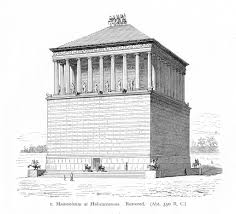
The Mausoleum at Halicarnassus
### The Mausoleum at Halicarnassus
The Mausoleum at Halicarnassus was a grand tomb built between 353 and 350 BCE for Mausolus, the ruler of Caria, and his wife-sister Artemisia II, in the city of Halicarnassus (modern-day Bodrum, Turkey). The structure was so impressive that Mausolus’ name became synonymous with grand tombs, giving us the word “mausoleum.”
The Mausoleum stood approximately 45 meters (148 feet) tall and was adorned with intricate sculptures and reliefs created by four prominent Greek sculptors: Scopas, Bryaxis, Leochares, and Timotheus. The structure combined Greek, Egyptian, and Lycian architectural styles, with a stepped pyramid roof supported by 36 Ionic columns. Atop the mausoleum was a massive chariot statue drawn by four horses, symbolizing the eternal journey of Mausolus.
Artemisia, who commissioned the tomb after Mausolus’ death, was deeply grieving and spared no expense in its construction. She reportedly mixed his ashes into her daily drink to keep him close. The tomb became a marvel of its time, attracting visitors from across the ancient world who came to admire its beauty and grandeur.
The Mausoleum stood for nearly 1,700 years, surviving multiple earthquakes and invasions. However, by the 15th century CE, much of the structure had been dismantled by the Knights of St. John, who used its stones to fortify their castle at Bodrum. Today, only the foundations and a few fragments of the sculptures remain, housed in the British Museum. The Mausoleum at Halicarnassus is remembered as a symbol of love, devotion, and architectural innovation.
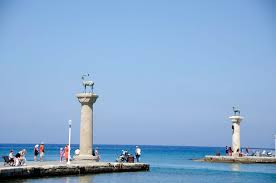
The Colossus of Rhodes
### The Colossus of Rhodes
The Colossus of Rhodes was a massive bronze statue of the sun god Helios, erected on the Greek island of Rhodes around 280 BCE. Standing approximately 33 meters (108 feet) tall, it was one of the tallest statues of the ancient world and was built to celebrate Rhodes’ victory over the ruler of Cyprus, Antigonus I Monophthalmus, in 305 BCE.
The statue was designed by the sculptor Chares of Lindos, a pupil of the famous sculptor Lysippos. It took 12 years to complete and was made of bronze plates over an iron framework. The Colossus was placed near the entrance of the harbor of Rhodes, with its feet either side of the harbor entrance, according to popular, though likely inaccurate, legend. The statue symbolized the unity and strength of the people of Rhodes, as well as their devotion to Helios, their patron deity.
Despite its grandeur, the Colossus stood for only 54 years before being toppled by an earthquake in 226 BCE. The statue broke at the knees.

The Lighthouse of Alexandria
###The Lighthouse of Alexandria
The Lighthouse of Alexandria, the seventh and last wonder also known as the Pharos of Alexandria, was one of the most remarkable engineering feats of the ancient world and stood as a symbol of human ingenuity for over a millennium. Built between 280 and 247 BCE on the small island of Pharos, just off the coast of Alexandria, Egypt, the lighthouse was commissioned by Ptolemy I Soter, a general of Alexander the Great, and completed during the reign of his son, Ptolemy II Philadelphus.
The lighthouse was designed by the Greek architect Sostratus of Cnidus, who reportedly inscribed his name on the structure, albeit hidden beneath a dedication to Ptolemy. The Pharos stood between 100 and 130 meters (330-430 feet) tall, making it one of the tallest man-made structures in the world at that time. It was constructed using large blocks of light-colored stone, which helped the tower reflect sunlight during the day. At night, a fire was lit at the top to guide sailors safely into the bustling port of Alexandria, making it one of the earliest examples of a lighthouse.
The structure consisted of three main tiers: a square base, a cylindrical midsection, and a smaller cylindrical tower at the top, where the flame burned. The lighthouse was topped with a statue, likely representing Zeus or Poseidon, the Greek god of the sea. The light from the Pharos could be seen from miles away, guiding sailors through the treacherous waters near the Egyptian coast.
The Lighthouse of Alexandria stood for over 1,500 years, surviving numerous earthquakes before finally succumbing to one in the 14th century. Today, the lighthouse is remembered not only for its architectural grandeur but also for its role in inspiring the construction of lighthouses around the world. While the original structure no longer exists, its legacy endures in the word “pharos,” which became a synonym for lighthouse in many languages. The Pharos of Alexandria remains a symbol of the ancient world’s ability to create structures of both practical use and profound beauty.
These wonders were celebrated not just for their size and beauty, but also for their representation of human ingenuity and creativity during antiquity. Unfortunately, aside from the Great Pyramid of Giza, all the other wonders have been destroyed by natural disasters or human actions over the centuries.
You can also visit 7 Wonders of the modern world 7 Wonders of the medieval world



